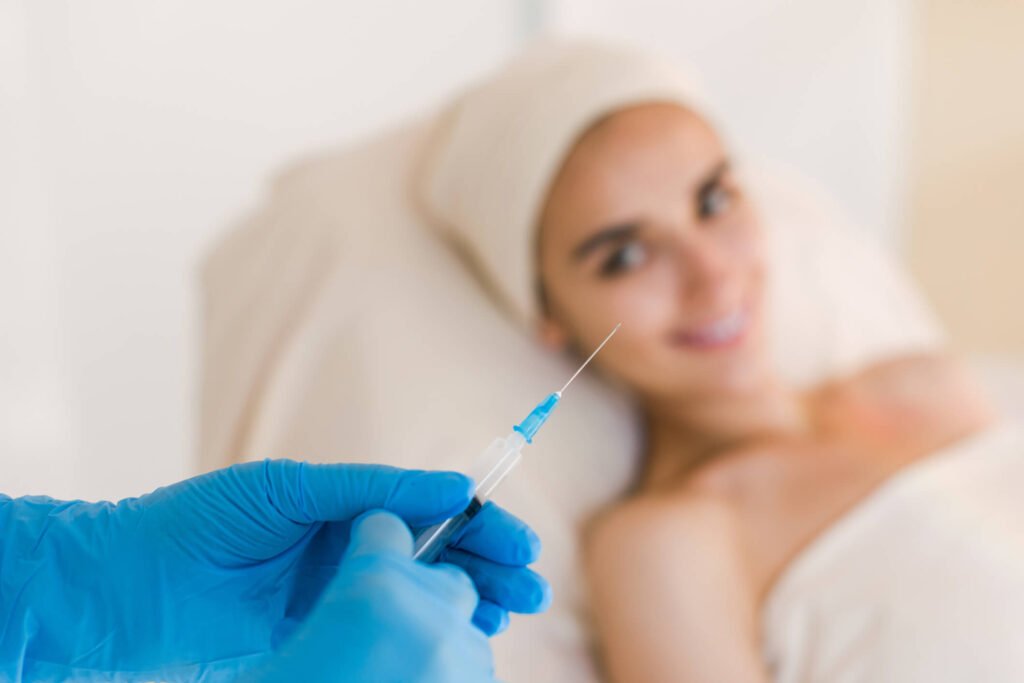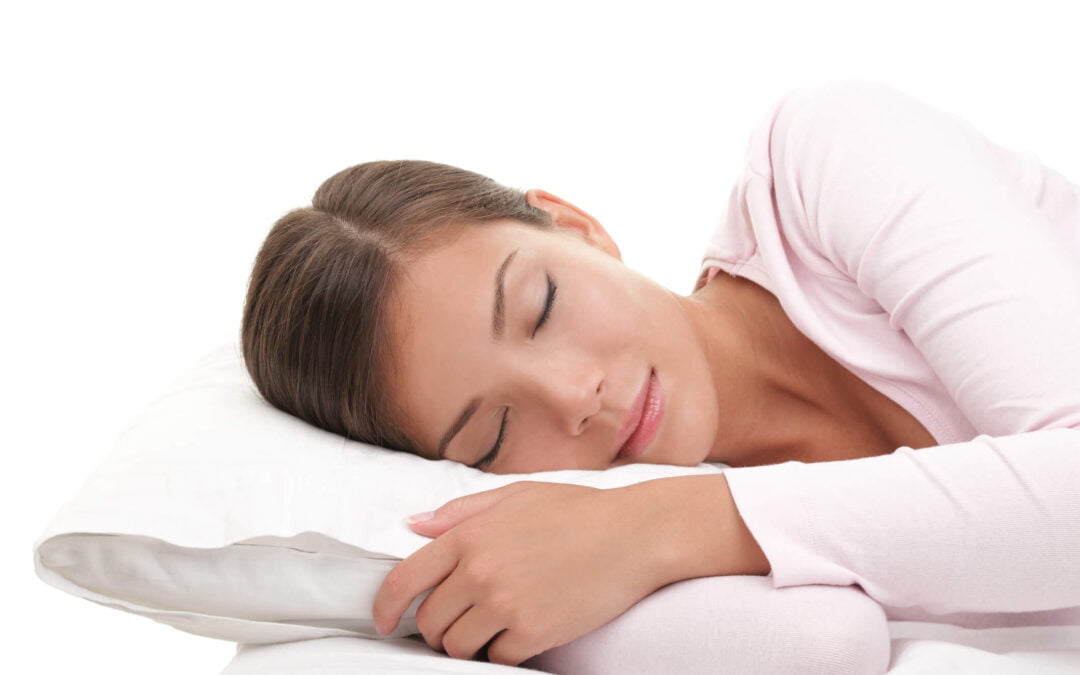How Long After Botox Can I Sleep On My Side
Who wants to appear old when they are still a youth at heart?
Fashion stars and celebrities consider cosmetic Botox a silver lining since it minimizes facial wrinkles. By injecting a diluted form of botulinum toxin, this procedure softens the wrinkles and prevents muscles from contracting.
People who receive these injections are most concerned about knowing “in what position they should sleep.” Notably, side sleepers insist on answering this query. After Botox surgery, experts advise waiting 4-6 hours before going to bed.
Sleep on your back for a week before gradually transitioning to your side.
In 2002, the Food and Drug Administration gave cosmetic Botox its g; since then, demand for the product has skyrocketed.
Sleep Flat on Your Back after Facial Botox Treatment
You must adhere strictly to the after-care guidelines if you want the finest results from your Botox treatment. Is there a specific position that I must sleep in after getting Botox? It is one of the queries people have.
After receiving facial Botox, the best sleeping posture is flat on your back. It has several advantages because doing so will prevent Botox from spreading to other areas of your face.
In addition, you ought to hold off on lying down for at least 4-6 hours. After that, you can lie down but spend at least a week doing so. Then, switch to your favorite side position.
If you lie down immediately after receiving facial Botox, there is a considerable danger of the medication wandering. Nobody likes to see their money, including their confidence, wasted. So, be patient if you want to get good results.
Avoid sleeping on your side or stomach. Additionally, sleeping on your back reduces the possibility of friction between pillows and your face, which may result in an infection.
It might be challenging to sleep on your back, especially if you often sleep on your side. You will require a lot of pillows to support you in this position. Put pillows beneath your knees, right and left tummy, below each arm, and on the right side and left of your body.
After getting cosmetic Botox, Dr. George Brennan discusses the possible dangers associated with the “sleeping position” and suggests that patients elevate their heads while they sleep to be safe.
According to Healthline, Dr. Brennan supports the after-care recommendations and adds that patients should refrain from leaning their heads forward or engaging in strenuous activity right after treatment or until the next day.
However, doctors frequently advise their patients to wait at least one night before starting to sleep on their side again. It is done to achieve the best results and decrease the mild adverse effects of this cosmetic procedure, such as pain, swelling, and inflammation. Additionally, resting on your back is ideal for preventing facial strain.
What are the risks of sleeping on my side after Botox?
Sleeping on your side after receiving Botox injections carries certain risks, although generally considered minimal. Botox is a neurotoxin commonly used for cosmetic purposes to reduce the appearance of sagging, wrinkles, and fine lines in the face, eyes, and forehead. It works by temporarily paralyzing the underlying muscles.
While Botox injections are generally safe, it is essential to take certain precautions to ensure optimal results and minimize potential risks. Here are a few considerations related to sleeping on your side after receiving Botox:
- Migration of the toxin: Immediately after receiving Botox, there is a slight risk of the toxin migrating from the injection site to nearby muscles. Sleeping on your side could increase this risk, as the pressure applied to the treated areas might inadvertently push the toxin into unintended muscle groups. That could result in undesired muscle weakness or asymmetrical effects.
- Increased swelling or bruising: Sleeping on your side can increase swelling and bruising in the treated areas. When you lie on your side, the pressure exerted on the face can disrupt the healing process and exacerbate these side effects. Generally, medical professionals recommend sleeping on your back or in an elevated position during the first few nights after receiving Botox injections.
- Reduced effectiveness: While sleeping on your side is unlikely to impact the overall effectiveness of Botox significantly, prolonged pressure or movement could disturb the distribution of the toxin. It could lead to less precise results or uneven muscle relaxation.
Following your healthcare provider’s post-treatment instructions is advisable to minimize these risks. They may recommend specific sleeping positions, such as sleeping on your back or with your head slightly elevated, for a certain period after the procedure. These guidelines aim to ensure optimal results and minimize the potential for complications.
How long will the effects of Botox last if I sleep on my side?
The placement and dosage of the injections, along with individual factors such as metabolism and muscle activity, primarily determine the effects of Botox injections. Sleeping on your side should not significantly impact the duration of the effects of Botox.
The effects of Botox typically last between three to six months, depending on various factors. The treated muscles gradually regain their function during this time, and the wrinkles or lines may reappear.
Sleeping on your side is a common sleep position and is generally unrelated to the longevity of Botox effects. However, excessive pressure or rubbing the treated area while sleeping on your side could affect the results. It’s advisable to avoid direct pressure or friction on the treated areas immediately after receiving Botox injections to ensure optimal results.
Suppose you have concerns about sleeping on your side and its potential impact on Botox. In that case, it is always best to consult a qualified doctor or medical professional like Dr. George Brenann, who can provide personalized advice based on your unique situation.

3 Ways to Sleep on Your Side after Botox
The target muscles need some time to become accustomed to the botulinum toxin. Therefore, waiting a week after therapy is best before switching to a side sleep position.
Most plastic surgeons advise natural side sleepers to wait 48 hours before starting their side sleeping practice. If you are a rigorous side sleeper, sleeping on your back may be a nightmare.
Following Botox, we’ll devise three viable strategies you might use to start sleeping on your side again.
Recommence Side Sleeping Gradually
Consider a gradual transition instead of immediately returning to your original sleeping position. You can maximize the benefits of your treatment by doing this. You do want a firm, wrinkle-free face, after all.
For all the individuals who have undergone or are thinking of receiving Botox injections, we have created a framework to help them achieve this.
Use pillows as a safety net.
There are pillows everywhere. Contact your house pillows to create an emergency landing inside your bedroom for the next 24 hours. Forcing yourself to sleep on your back is difficult, especially if you usually sleep on your side.
To keep your hips and shoulders in place and prevent turning over while you sleep, wrap the pillows over them.
Utilize a neck pillow to balance.
Dr. George Brennan claims that steadily holding the neck in place is essential for deflecting power away from the Botox areas. To obtain a secure neck posture, you might utilize specialized cervical pillows.
Monitor Swelling
After 48 to 72 hours from your Botox procedure, check your face. You can resume side sleeping if you don’t notice any swelling or bruising. Remember to ask your doctor for advice and receive their approval.
If you sleep by your side, consider that your face will contact the mattress. Ensure that your pillows are clean and comfy. Because it touches your face directly, the blanket is soft and breathable.
Tips for Sleeping After Botox
You must abide by the sleeping advice provided below if you want your Botox procedure to transform your appearance completely. These tips will benefit you, especially if you naturally sleep by your side.
Sleep on Your Back
According to a study, people who have Botox treatment ought to sleep on their back for at least a week. This sleeping position helps to shift the physical pressure out of the injection sites for your anti-wrinkle treatments.
It assists in reducing the risk of infections and bruises in the regions that need attention. Your face is less likely to touch the pillows while lying flat on your back. After 4-6 hours following surgery, lie down.
Put pillows all around your body.
You can avoid tossing and turning as you sleep by placing pillows around your body, which can be placed on the sides of your shoulders, under your knees, and around your hips. Whether you want to utilize wedge pillows for this reason or prefer ordinary pillows depends on your preference.
Use Silk Beddings
Silk comforters offer excellent ventilation and are hypoallergenic.
Why did you receive Botox treatment? Obviously, to make your skin smooth and youthful-looking.
To extend the effects of therapy and organically improve the appearance of your skin, we recommend silk bedding. Compared to cotton bedding, silk keeps moisture and hydrates the skin. According to research, mulberry silk contains the secretin protein, which clears clogged pores and promotes anti-aging.
Avoid applying cream to your face.
Keep in mind that mending takes time for your skin. Set aside your skin-care routine for a while. Applying creams vigorously to the face stresses the skin and increases the risk of Botox spreading to other areas. Once you start, wait at least 24 hours before applying cream to your face gently.
Sleep on clean linen.
Replace your bedding, including your duvet covers, pillows, and bed sheets, with clean ones before your doctor’s appointment. Any dust, grime, allergies, or bacteria that may be on the bedding could contact your skin and contaminate it or infect it.
Do switch out your sheets once a week. Clean sheets are equivalent to skin that is healthy and radiant.
Avoid Hot Showers
Do you enjoy a hot shower before going to bed?
If you recently had Botox surgery, stop. After surgery, you must keep your heart rate within the normal range. Hot showers are not advised because they raise blood pressure.
Avoid Headbands
I’m aware that many individuals like to wear headbands at night, and they are deemed unsuitable because the pressure they exert can change how treatments work.
You can have the headbands after two nights.
What’s next?
Suppose you are among those interested in Botox and want to achieve a more youthful, rejuvenating look. Look no further than Dr. George Brennan, a Cosmetic Surgeon in Newport Beach. For more information and questions, call us at (949) 644-1641.

